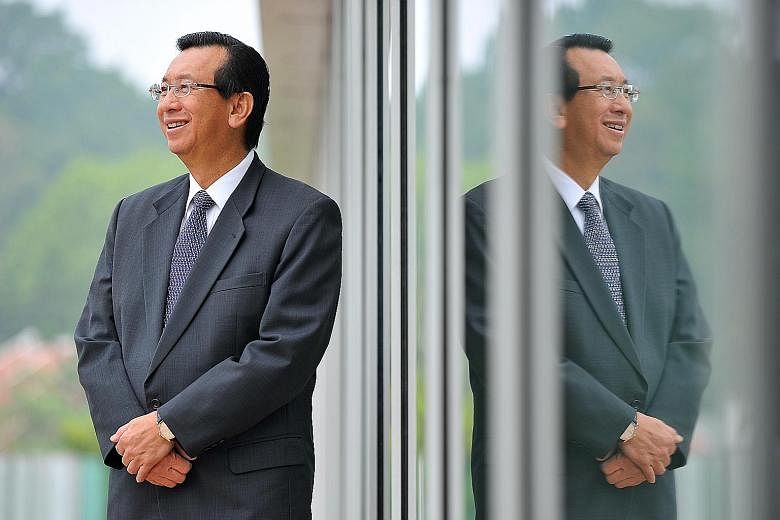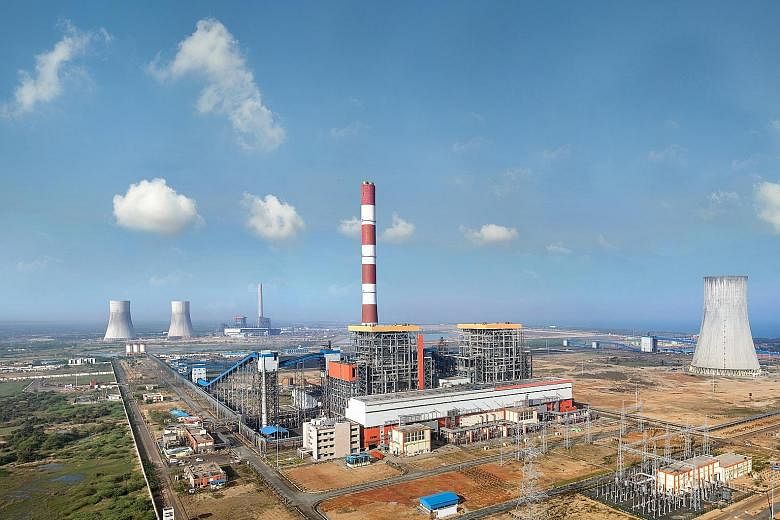While many associate Sembcorp Industries with its marine unit Sembcorp Marine, utilities has become the backbone of its business over the past two decades.
Chief executive Tang Kin Fei told The Straits Times in an exclusive interview: "Utilities are essential services; whether the economy is up or down, people still need power and water, whereas the marine business depends on whether you get a contract."
While power and water plants in China and the Middle East were at the forefront of Sembcorp Industries' expansion over the past 10 years, Mr Tang forsees that it could be India's turn in the coming decade. Some of its business in India could eventually be spun off separately, he adds.
Sembcorp reported a 47 per cent fall in net profit for the first half ended June 30, dragged down by Sembcorp Marine, so the load the utilities business will have to shoulder becomes more apparent.
Utilities brought in about 77 per cent of the group's profit in the first half of the year.
INDIA
Although Singapore was responsible for about a third of the profits from the utilities business in the first half, Sembcorp's growth focus is in rapidly developing economies overseas. India, in particular, is the one market that can give Sembcorp's fortunes a boost.
The foundation for its big push into the country is its 2,640MW Sembcorp Gayatri Power Complex in Andhra Pradesh, which opened earlier this year.
The facility cost about US$3 billion (S$4.1 billion) and has the distinction of being the largest foreign direct investment-driven project on a single site in the thermal energy sector in India. It houses two 1,320MW supercritical coal-fired power plants.
Mr Tang says: "India is short of power. We were able to deliver the plant on time. The project had been delayed and we provided the funding to complete it." While the first of the two plants in the complex is now operational - the second should be up and running by the end of the year - there have been some teething problems. The average power load factor was lower in the second quarter due to a shutdown of one of the plant's units. It has resumed operating.
Some analysts have highlighted that the lack of long-term agreements to take up the power being produced is hampering growth but these could soon be in place.
OCBC Research wrote that Sembcorp is bidding for a 500MW long-term power purchase agreement with Andhra Pradesh, where a new capital city is being constructed. If that is obtained, then three out of the four units would be under long-term agreements. Each plant has two 660MW units.
Mr Tang says the future of Sembcorp lies with utilities, in the medium term at least. "These are essential services that we provide, that's why we are going for these rapidly developing economies where there will be a demand for such services."
With India's economy expected to grow at over 7 per cent this year, Mr Tang is confident that demand for power there will increase and there will be plenty of room for growth.
Sembcorp has also been quietly building up its renewable energy business in India.
It invested 10.6 billion rupees (or around S$227 million at the time) for a stake in one of India's leading renewable energy firms, with wind and solar power assets across seven renewable resource-rich states there. This year, it upped its stake further in the company, now called Sembcorp Green Infra, to 68.74 per cent.
Mr Tang says: "Sembcorp Green Infra is a growth platform for our renewable energy business; it will be part of this new growth engine and enhance our product line."
CHINA
He remains confident that large economies like India and China can still offer opportunities: "As they meet their growth targets, there will also be new water and power requirements which will offer opportunities for us. We can participate in those projects."
In China and India with their coal-fired plants, as the economy develops, there will be a greater push for more environmentally friendly and sustainable power facilities. With the power plants and the green business, the firm's Indian operations now have US$4 billion of assets and employ around 900 staff.
If the business takes off sufficiently, says Mr Tang, the India utility and renewable energy business could be spun off via a large IPO.
China is also going to remain a significant contributor. After all, Sembcorp is already in 13 provinces.
While the economy has slowed in China, there are still areas of growth for Sembcorp's China utilities business, says Mr Tang.
He stresses that growing concern for the environment in China and an increased focus on ensuring treated wastewater meets standards creates further opportunities for Sembcorp.
For example, one of its recent projects was in Lianyungang, Jiangsu, where it took over and upgraded a non-performing wastewater treatment plant, ensuring that it would be able to treat industrial effluent to meet regulatory standards.
Sembcorp's water capabilities in the country extend to serving communities, as well as providing an entire range of management services for industries in different sectors, including speciality ones like coal-to-chemicals. It also has an energy business in China in both the thermal and renewable sectors.
ASEAN
In line with the focus on emerging markets, Asean is very much at the top of the agenda.
Last year, Sembcorp won a project to build and operate what will be one of the largest gas-fired power plants in Myanmar. This March, Sembcorp secured a power purchase agreement for the project. With positive growth prospects, coupled with one of the lowest electrification rates in the world and an energy demand projected to grow at a compound annual growth rate of around 13 per cent between last year and 2030, the expansion into Myanmar may pay off handsomely.
While there may be more turbulence ahead for the oil and gas sector, Sembcorp Marine is prepared for the upturn. Mr Tang says: "It's a cyclical business. We have good capabilities and we will wait for the opportunities to come."



